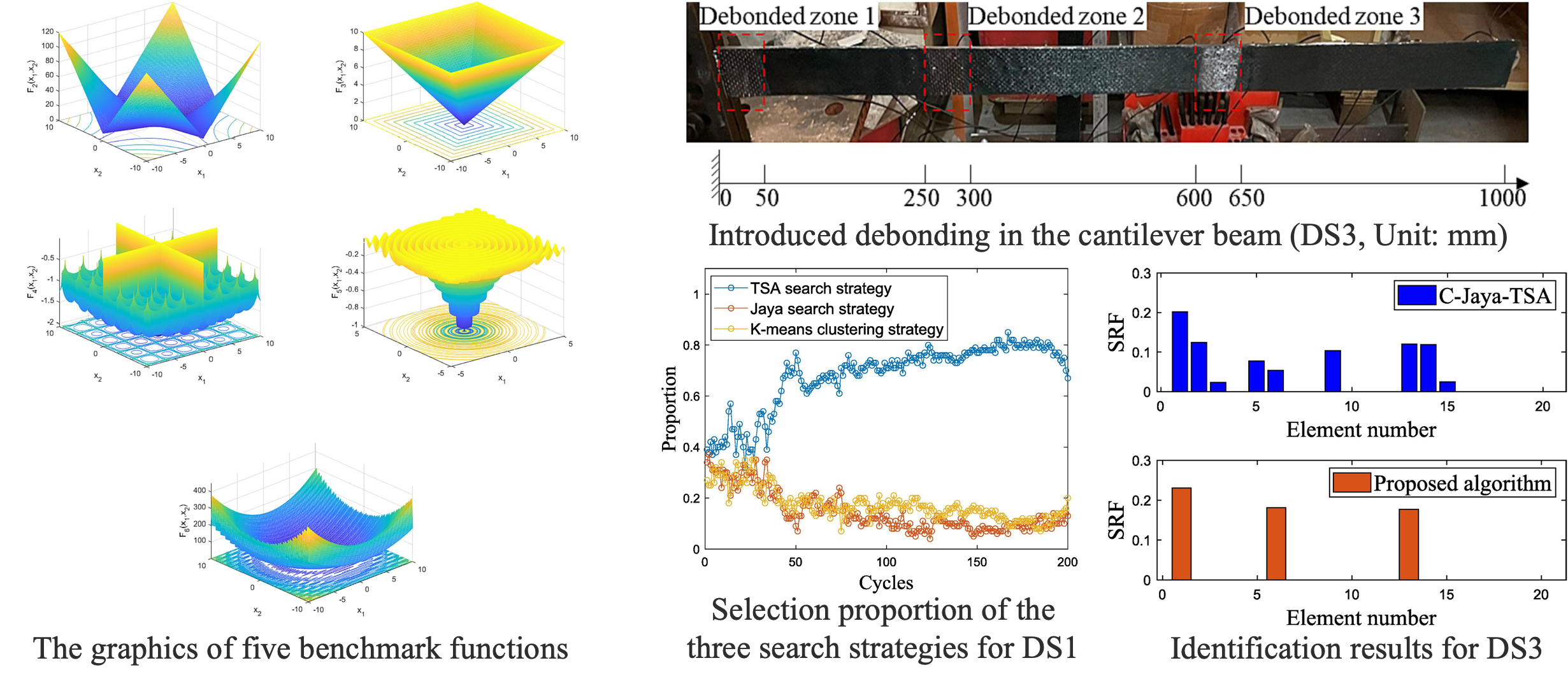Vibration-based FRP debonding detection using a Q-learning evolutionary algorithm
Highlight
•An FRP debonding detection method is developed using the structural vibration properties for the first time.
•An integrated Q-learning evolutionary algorithm is developed to solve the optimization problem in debonding detection.
•Several FRP debonding scenarios were specially designed and simulated in the laboratory to verify the developed technique.
The secured bonding between the externally bonded fiber reinforced polymer (FRP) and the host structure is critical to provide the composite action of the FRP strengthened structure. Conventional FRP debonding assessment is usually based on nondestructive testing methods, which have limited sensing coverage and thus cannot detect debonding far away from the sensors. In this study, the global vibration-based method is developed to identify the debonding condition of FRP strengthened structures for the first time. An FRP strengthened cantilever steel beam was tested in the laboratory. As debonding damage is non-invertible, a series of FRP debonding scenarios were specially designed by a stepwise bonding procedure in an inverse sequence. In each scenario, the first six natural frequencies and mode shapes were extracted from the modal testing and used for detecting the simulated debonding damage via the model updating technique. An l0.5 regularization is adopted to enforce sparse damage detection. A new Q-learning evolutionary algorithm is developed to solve the optimization problem by integrating the K-means clustering, Jaya, and the tree seeds algorithms. The experimental results show that the debonding condition of the FRP strengthened beam can be accurately located and quantified in all debonding scenarios. The present study provides a new FRP debonding detection approach.





